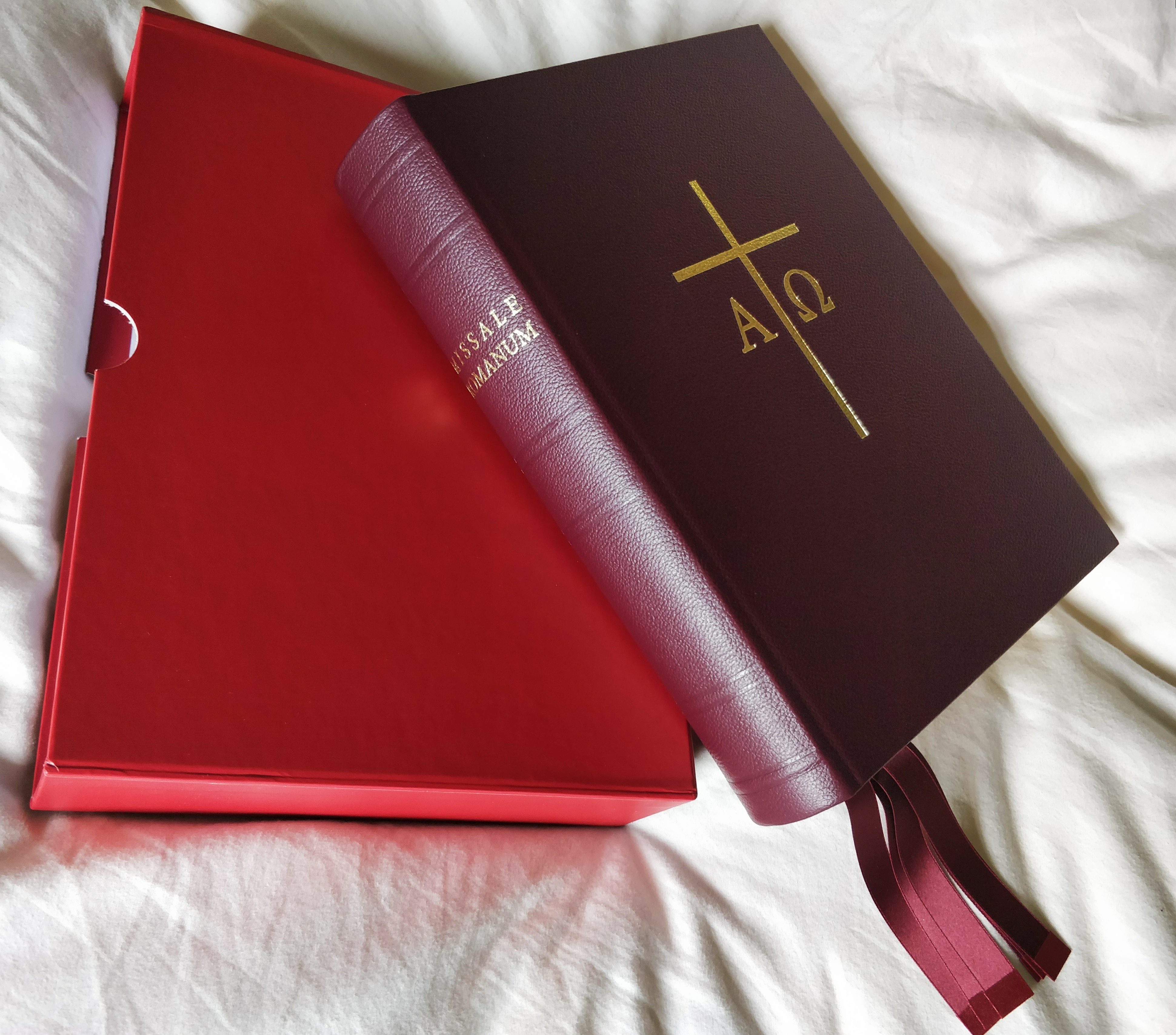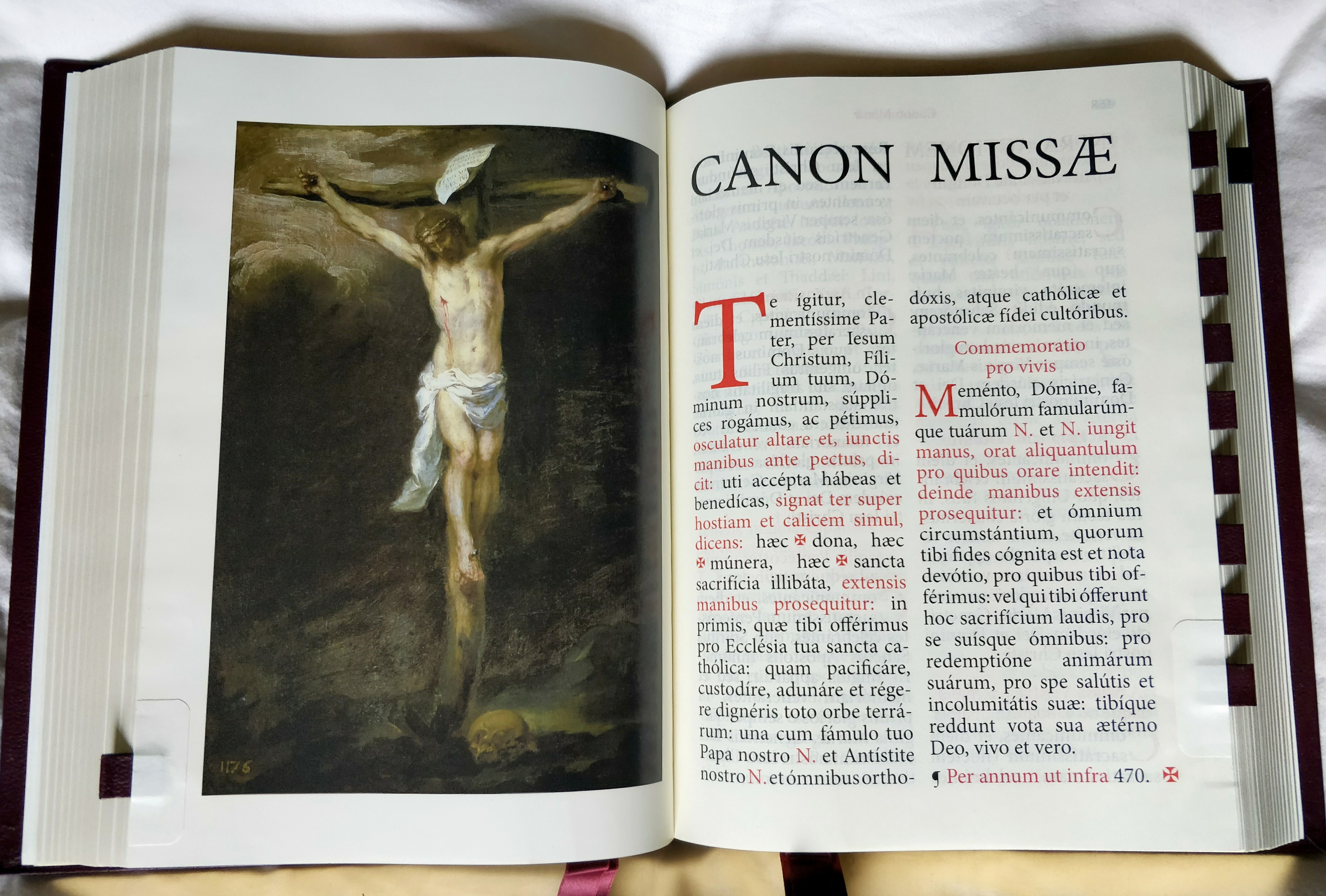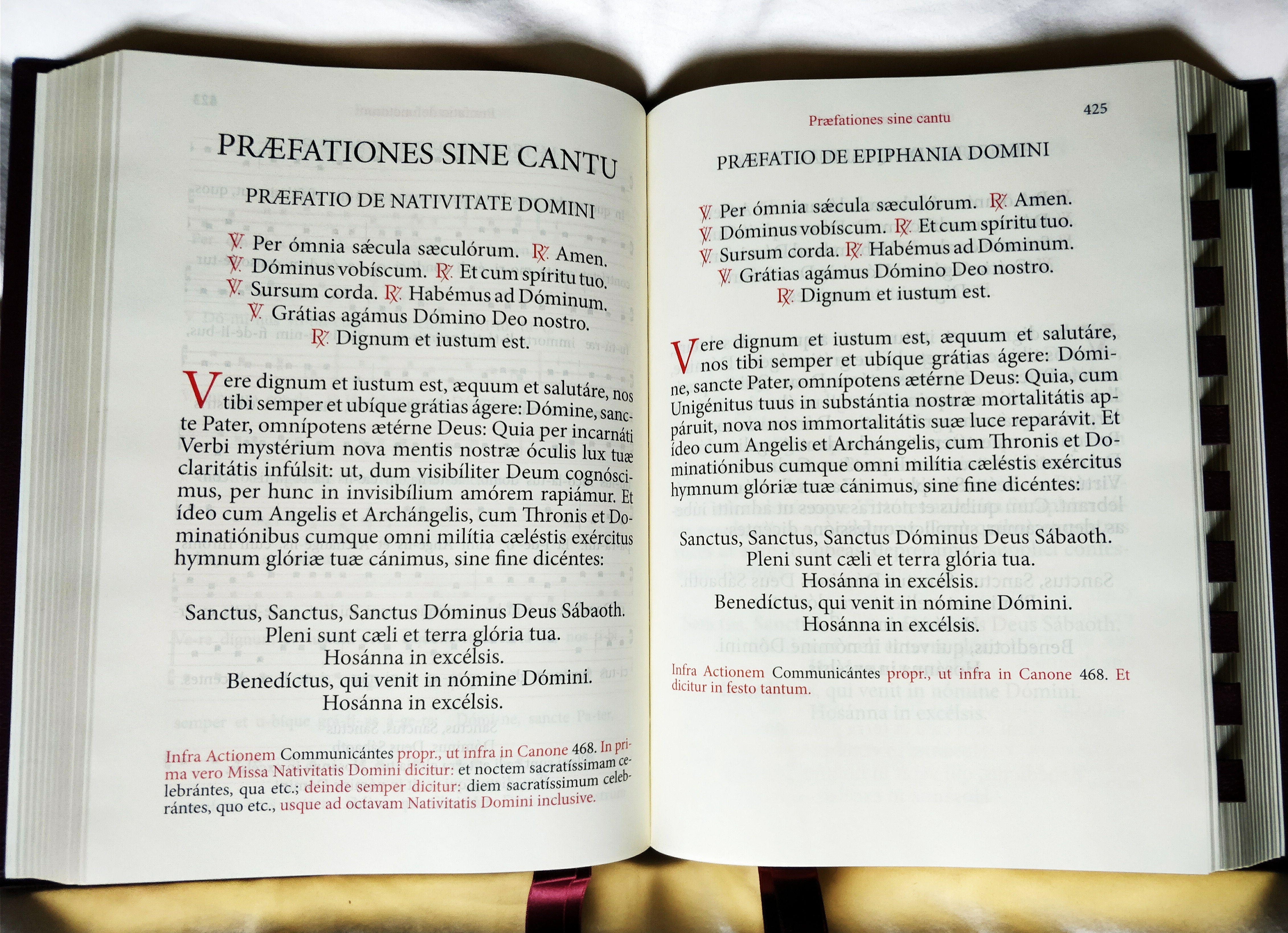…bought this lovely piece of liturgical bookmanship. This altar missal for the Extraordinary Form is so nicely produced, and at a price cheaper than the equivalent for the Ordinary Form available here, that I felt it needed a brief review. In part this is due to the fact that there are now a number of editions of the EF missal being produced at varying price points. There is certainly a lot of life in the old form yet!
The missal comes from the FSSP publishing house in Germany (or is Switzerland?).


It has a very sturdy slip case. The missal is bound in burgundy leather, soberly done without an excess of gold embossed decoration.

It has six dark burgundy satin ribbons finished so as to prevent fraying. There are plenty of page tabs throughout, and these are reinforced where they meet the page to prevent ripping. This is a missal designed for frequent use rather than for decorating a shelf.

The paper is apparently acid-free and missal quality, and is bone coloured rather than pure white, which makes it easier on the eyes. The pages have gold gilt-edging.

The publishers have eschewed artwork save for the traditional crucifixion scene that begins the Canon (n.b. the reinforced page tabs).

The typeface, an attractive serif, is gratifyingly large and with good leading (or linespacing), both of which make for ease of reading.


Likewise the music is large and clear, written in chant notation on a 4-line stave.

Missals such as this are not cheap, and this is no surprise given that it measures 12.25 x 9 x 2.25 inches, uses quality materials and is very finely finished. That said, relative to other editions (many from the USA) that are on the market, it is well-priced at £220. This one came via Cenacle in Skelmersdale, near Liverpool. It is holiday money well spent, and leaves me with no excuse at all now for not learning the Mass that served the Church since before the time of St Gregory the Great (†604). This would be very much in the spirit of the ressourcement advocated by such as Henri de Lubac. I am still trying to comprehend fully how ressourcement, both in liturgy and theology, ended up as creative writing.
Pax.
An absolutely beautiful edition Father. May you have much use of it.
Beautiful. There’s no excuse now!
A beautiful book Father—and I do love a beautiful book 🙂
Father, just to answer your question, the legal ‘seat of publication’ is the FSSP in Thalwil, Switzerland: the printing (which looks truly superb) was done by the Bavarian firm of C.H. Beck in Nördlingen (a picture-book old town on the border with Schwabia).
Btw – on the subject of ‘ressourcement’ – I assume that the concept was invented to get round the repeated charge of modernism. If modernists could, however factitiously, support their ‘nouvelle-theological’ and ‘nouvelle-liturgical’ theories by referencing some ‘early source’, it could be guaranteed back in the 1960s and 1970s that few readers or listeners would have enough Greek or Latin to look into these early sources, and distinguish what they were claimed to say from what they actually said…
As a ploy, you have to admit, Father, it was a huge success 🙂 …until its ‘fruits’ proved it to be an empty and largely mendacious endeavour.
A beautiful missal, greetings! Now you’ll be able to celebrate once in a while like this.
You mean you didn’t have servicable altar missals available at Douai?
Not for the EF, save for one which dates from the 1950s. The other missals are all quite ancient and so live in the library.
Wonderful piece of work.